Longtime Critical Role enthusiasts and fans of Explorer’s Guide to Wildemount and Critical Role: Call of the Netherdeep alike will rejoice at the arrival of Tal’Dorei Campaign Setting Reborn to D&D Beyond, as with it comes nine brand new subclasses to be used in your campaigns set in the world of Exandria (with your DM’s permission, of course)!
With so many options, there’s a bit of something for every play style. Here is a brief glance at each new subclass, and what typical party role or roles they might be well equipped to fill!
- Path of the Juggernaut Barbarian
- College of Tragedy Bard
- Blood Domain Cleric
- Moon Domain Cleric
- Circle of the Blighted Druid
- Way of the Cobalt Soul Monk
- Oath of the Open Sea Paladin
- Runechild Sorcerer
- Blood Magic Wizard
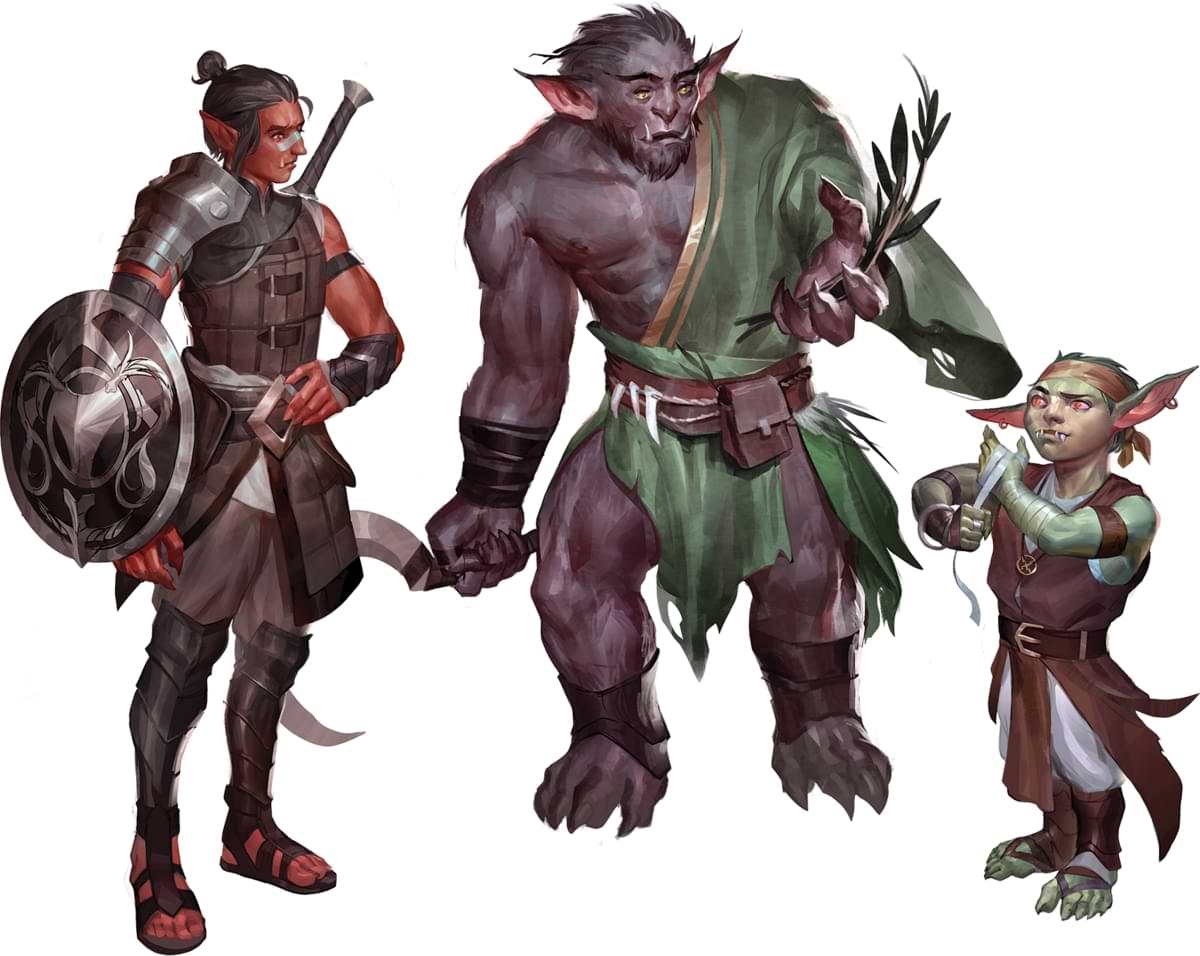
Content Warning: Blood, Mild Self-Harm
Two subclasses presented in Tal’Dorei Campaign Setting Reborn and discussed here deal strongly with hemocraft, a particular branch of magic concerned with the manipulation of blood. Both of these subclasses have one or more features requiring self-sacrifice of vitality in exchange for other benefits. These topics may be uncomfortable for some individuals, and their use in your campaign is an excellent conversation to have during a session zero. If the reader wishes to avoid these subjects, please feel free to skip over the sections below on the cleric’s Blood Domain and wizard’s Blood Magic arcane tradition.
Third-Party Content
Tal'Dorei Campaign Setting Reborn is third-party content from Darrington Press. If you wish to use any of the materials found in this book, talk to your fellow players and Dungeon Master. Ultimately, your DM has the final say on what content is and is not available for adventures they run.
1. Path of the Juggernaut Barbarian
One part unstoppable force, one part immovable object, the Path of the Juggernaut answers the question, “What if a mountain were a barbarian?” This concept is immediately apparent from the subclass’s earliest features.
At 3rd level, you can’t be knocked prone or moved along the ground against your will, and your melee strikes can move your opponents. In addition to hitting like a truck and standing resolute as a boulder, higher-level features grant extra defensive capabilities—a conditional inability to be grappled, and immunity to speed reductions and the frightened, paralyzed, prone, and stunned conditions while raging—as well as the ability to knock enemies prone and grant your allies attacks when you push an enemy within reach.
Barbarians that follow the Path of the Juggernaut make for particularly potent bulwarks on the front lines, protecting squishier companions by refusing to be shoved aside from a defensible position. Excelling at battlefield control, they are likewise able to push away foes who have already closed the gap on their brethren. More than just a raging damage soak, the Path of the Juggernaut is a barbarian suited for players wanting to both swing an axe and to exclaim, “You. Shall. Not. Pass!”
2. College of Tragedy Bard
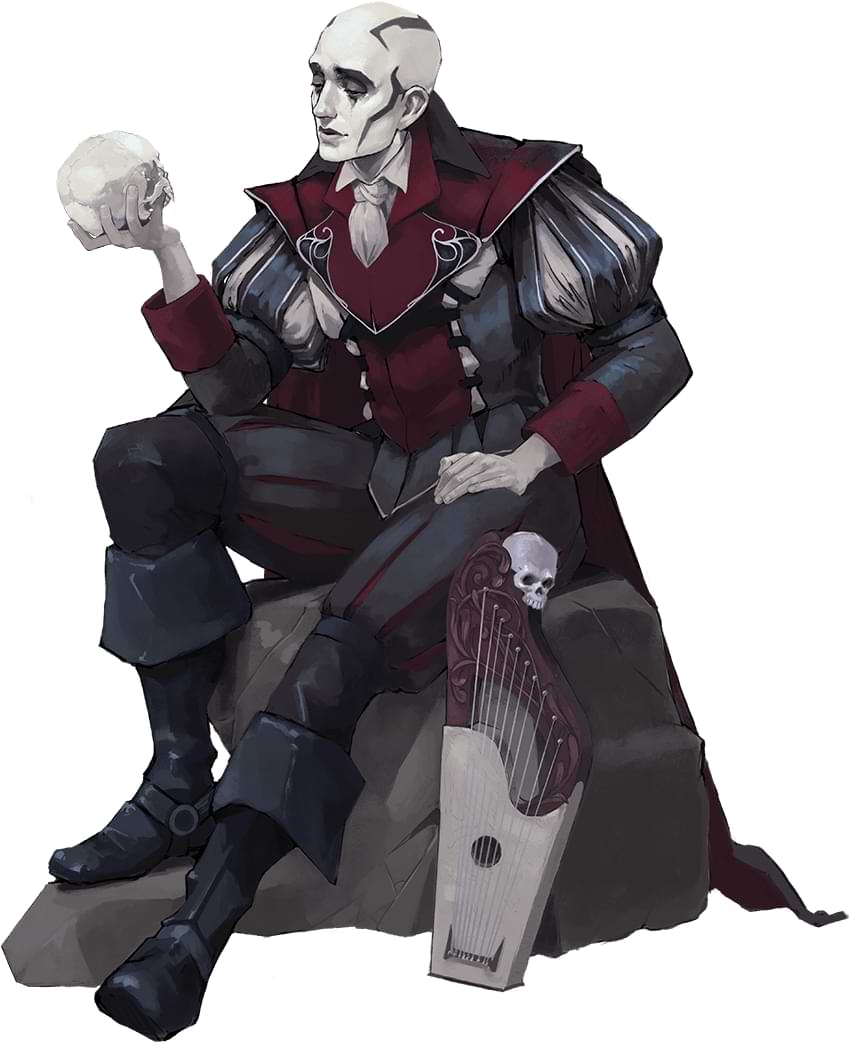
Do you fantasize about delivering a monologue worthy of Critical Role’s Liam O’Brien? Do you revel in helping your table find grim levity in failure? Were you a theater kid? Congratulations! The College of Tragedy allows your bard to embrace the overly dramatic in the most fantastic of ways.
Whether fully committing to the role of overbearing gloom, or providing an over-the-top parody, sorrow and demise are celebrated throughout the mechanics of this bard college. At 3rd level, a roll of 1 on a d20 by you or your allies allows you to regain an expended use of Bardic Inspiration with your reaction.
You have a new way to expend your Bardic Inspiration, too. Also at 3rd level, your Sorrowful Fates feature allows you to change a foe’s saving throw type to a Charisma save, and to deal psychic damage should the creature fail that save. Your sense of impending doom is even more infectious at higher levels, allowing you to temporarily increase the critical hit range on an enemy, to borrow a moment of luck in the present against even greater peril in the future, and even to empower an ally at the cost of a potentially early demise.
The College of Tragedy is well-suited mechanically for players who enjoy both support roles and performing some battlefield control; the more the party fails, the more support this tragic bard can provide, all while being a barbed thorn in their enemies’ sides. This subclass is also for the aspiring Best Supporting Actor or Actress looking for an excuse to let their gothic melodrama loose at the table. But perhaps the most valuable role for a College of Tragedy bard is at a table where the dice gods have been angered, and where failure and tragedy are more than commonplace. Can you see another’s woe, and not be inspired too?
3. Blood Domain Cleric
This divine domain—developed by the Claret Orders of Wildemount—grants its clerics a connection with the lifegiving blood (or blood-like substances) coursing through many creatures’ veins, allowing for direct manipulation of their movements, as well as enhanced damage from certain spells and weapon attacks.
Crimson Bond, the first of a Blood Domain cleric’s new options for Channel Divinity, grants the user a 1-hour bond with a creature, during which they can glean certain information about its vitality, and can even sacrifice some of their own vitality to see or hear through the bonded creature’s senses. The second new Channel Divinity option, Blood Puppet, allows you to control a creature’s (or corpse’s!) movements through direct manipulation of its blood.
Much of the Blood Domain Spells list offers blood-bending magic of a similar vein: hold person, haste, slow, dominate person, and hold monster, among others. 6th level grants Sanguine Recall, allowing you to regain expended spell slots at the cost of your own health, and high-level Blood Domain clerics will be able to unleash a potent area of effect that aims to bleed their opponents dry.
Those with the staunch iron will to play such a blood-oriented subclass will find its features less suited to field medic–style support, and more akin to the strong control and damage often exhibited by wizards. The Blood Domain is for the cleric desiring to play a battlefield mage. While martial weapon proficiency and Divine Strike (dealing extra necrotic damage on a successful weapon attack) offers diversity and well-roundedness when necessary, divinely inspired hemocrafters will ultimately find success in staying out of the fray and controlling enemies from afar, and in avoiding battle wounds so as to refuel their spell slots and continue to unleash potent magic.
4. Moon Domain Cleric
Clerics of the Moon Domain harness the power of the large pale Exandrian moon of Catha, and also the totally normal, absolutely ordinary, small red Ruidus. Along with a Domain Spell list ripe with illusion and evocation magic (yes, you get moonbeam!), clerics of this domain pack some potent tools: You can grant nearby allies advantage on Wisdom saving throws, and can use your Channel Divinity to either bless an ally with your choice of physical improvements or to concentrate on two Moon Domain Spells simultaneously. At high levels, you can even manifest some perfectly unhaunted (…probably) reddish moonlight, hampering your enemies within an extraordinary radius.
Clerics of the Moon Domain are all about buffing their allies, and would make for very strong support characters; they’re perfect for the player desiring to not eclipse their companions but to help them reach their full potential! Of course, there is room to shine brightly offensively: Concentrating on two space lasers (read: moonbeam) at once? Yes please!
5. Circle of the Blighted Druid
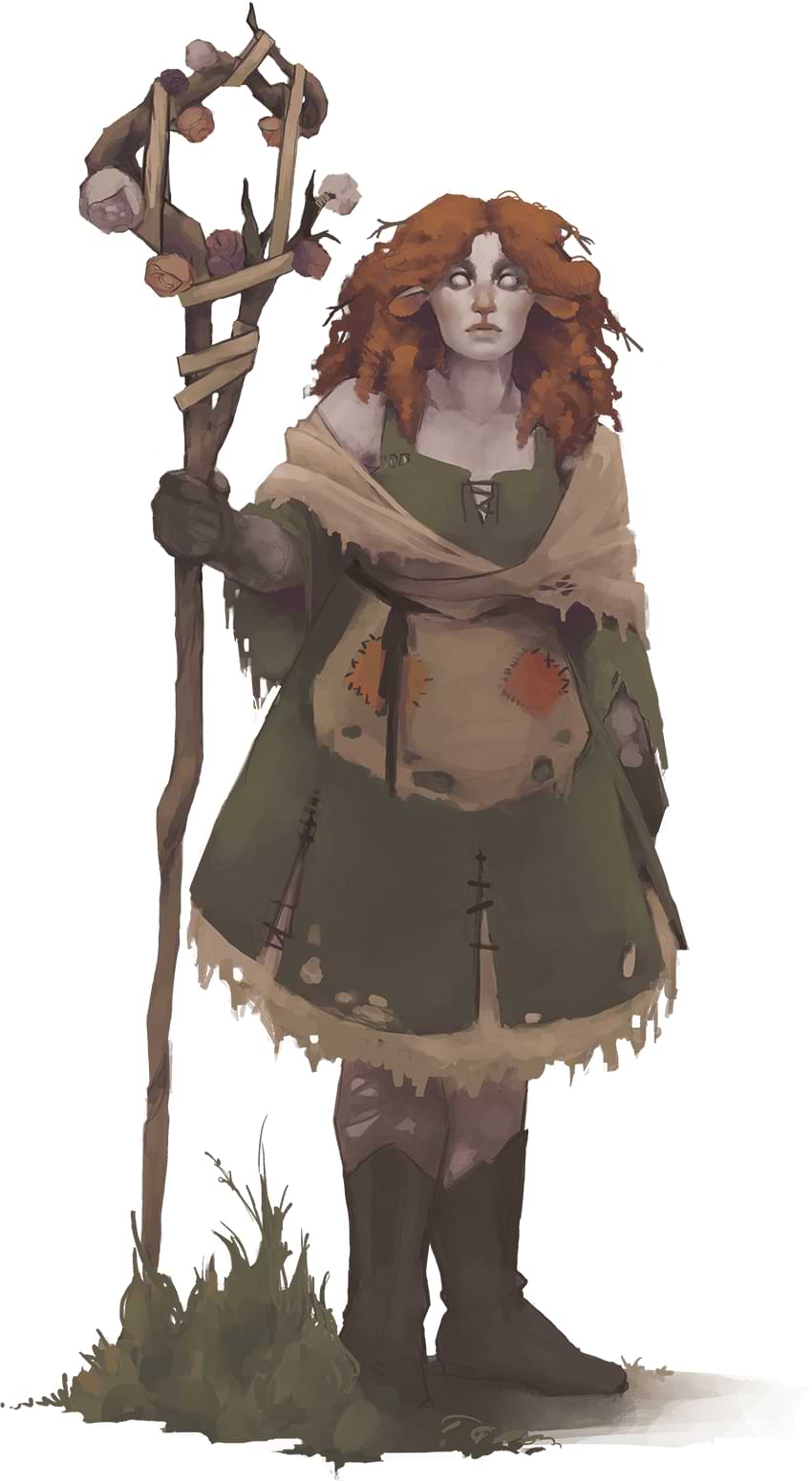
What if the land you pledged to protect became warped and vile, extending that corruption into your own magic? The Circle of the Blighted explores this intriguingly sinister take on the druid.
Starting at 2nd level, you are able to use your Defile Ground feature to temporarily extend this corruption into a patch of land around you, creating an environment harsh to your enemies; in addition to acting as difficult terrain for hostile creatures, foes within the blighted area will take additional necrotic damage when first injured each turn. You also begin 2nd level with Blighted Shape, a feature granting proficiency in the Charisma (Intimidation) skill and giving your Wild Shape forms a +2 bonus to AC and an extra 60 feet of darkvision.
At 6th level, you are able to summon a blighted sapling when a creature in your patch of defiled ground takes damage, which acts on your initiative count and obeys your commands, and at 10th level many of your summoned creatures (including the blighted sapling) violently explode when reduced to 0 hit points (or on your command, as an action), dealing damage to adjacent creatures. Gaining resistance to necrotic damage and a +2 bonus to AC at 14th level, you may also gain temporary hit points while within your defiled ground.
Druids who join the Circle of the Blighted are particularly adept summoners once they reach 10th level and can cause summoned creatures to explode. Your Foul Conjuration feature works with all beasts, fey, or plants summoned or created by your spells or class features, and you can concentrate on a spell that summons or conjures a creature while also controlling a blighted sapling!
The increased hardiness of your Wild Shape forms and added or improved darkvision makes for an expert scout. While lacking the higher-CR forms that a Circle of the Moon druid might take, the AC boost in Wild Shape form at 2nd level and overall again at 14th level means you have added durability in combat. With the right beast form (such as one that can knock a foe prone)—or with spells or allies devoted to pushing and pulling enemies or slowing enemy movement—proper application of Defile Ground can yield excellent results in a control-focused play style. In short: This druid’s got options!
6. Way of the Cobalt Soul Monk
We all know corruption runs rampant in both the Empire and the Clovis Concord. I don’t want anything to do with that. I just want the truth.
—Beauregard Lionett
Monks of the Way of the Cobalt Soul wield knowledge as a weapon, both in and out of combat. As agents of the Library of the Cobalt Soul—a network of libraries and repositories of knowledge across Exandria—such monks seek further knowledge, and use that which is learned for the betterment of Exandria.
As demonstrated on Critical Role by Beauregard of the Mighty Nein, practitioners of this monastic tradition can use unarmed strikes to Extract Aspects—gleaning information about resistances, vulnerabilities, and immunities—and to Extort Truth, using pressure points as a nerve-based truth serum. Cobalt Soul monks continue to gain additional proficiencies and languages, at 11th level gain the ability to take additional reactions, and ultimately can use unarmed strikes to make a creature more vulnerable to their choice of damage type.
Perhaps unsurprisingly, a monk of the Way of the Cobalt Soul might typically excel in the pillars of exploration and social interaction. In combat, their ability to understand an enemy’s strengths and weaknesses make for superb battlefield support in the form of precious intel. While not particularly heavy hitters, their Mind of Mercury—granting additional reactions—makes for ironclad missile defense; when paired with potent reactions, such as the Sentinel feat’s opportunity attacks or access to counterspell, this can make for truly devastating battlefield control.
7. Oath of the Open Sea Paladin
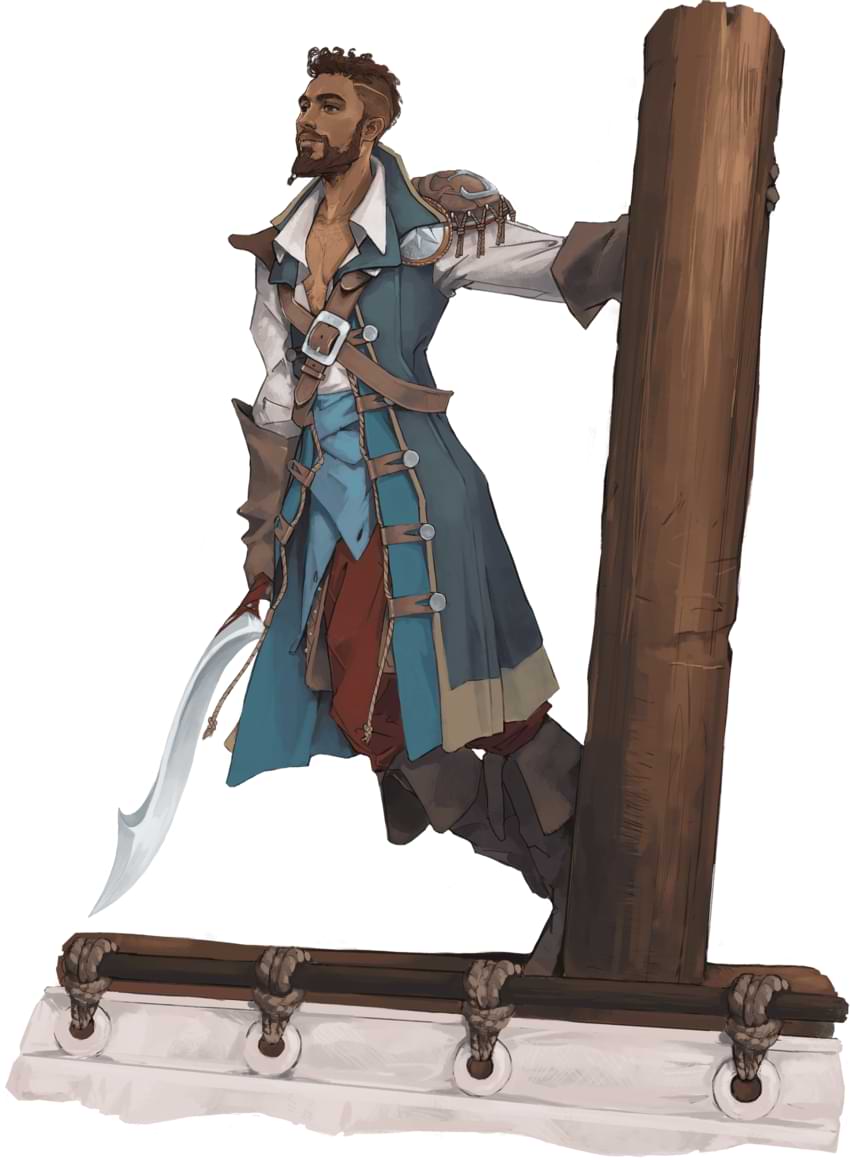
Freedom. Discovery. Fluidity. These are all ideals held true by paladins who have taken the Oath of the Open Sea. If you live, eat, and breathe the sea—like the Mighty Nein’s Fjord from Critical Role—you’ll find nothing but sailor’s delight in this sacred oath.
In addition to a delightfully seaworthy Oath of the Open Sea Spells list (including two brand new spells, freedom of the waves and freedom of the winds), 3rd level grants you two mighty Channel Divinity options: Marine Layer allows you to summon a thick, portable fog that you and adjacent creatures can somewhat see through, and Fury of the Tides bolsters your weapon attacks with forceful elements, sending foes flying. At higher levels, you can grant yourself and nearby allies freedom from the grappled and restrained conditions and from underwater movement penalties; you can send crashing waves over enemies entering or leaving your reach; and ultimately, you can swashbuckle like none have swashbuckled before!
The features of an Oath of the Open Sea paladin are as vast as the expanse of the ocean. With Oath Spells that include create or destroy water, augury, and commune with nature, exploration and survival are a breeze. Marine Layer, your Aura of Liberation, and a plethora of movement- and teleportation-based spells mean you’ll never be caught in a net or with no wind in your sails. Fury of the Tides and your uncanny ability to summon crashing waves grant both extra damage and a modicum of battlefield control. Taking this sacred oath truly means the world is your oyster.
8. Runechild Sorcerer
Okay, but what if sorcerers had … layers? As a Runechild sorcerer, sorcery points are to silk like Essence Runes are to glass—as you spend sorcery points, the runes that manifest on your body become charged, and these charged runes may be expended to varying effects.
Perfect for the experienced player adept at resource management, this sorcerer premium plan offers numerous benefits: Whenever you take damage, you can expend charged runes to reduce the damage taken. At 6th level, you can extend this benefit to others, and you can expend charged runes to grant advantage on certain ability checks and saving throws, and to reveal hidden glyphs and magic. At 14th level, you can unleash a Runic Torrent, causing a spell to deal force damage and to potentially push opponents away or knock them prone. In your 18th-level subclass capstone, you can become a sorcerer supreme (wait—I mean… an Arcane Exemplar), drastically augmenting your sorcerous power at the running cost of a charged rune per turn.
While perhaps not for the faint of heart—managing two separate but linked resources might be a daunting prospect—the benefits are vast. You become the most sorcerer-y of sorcerers, a paragon of potent magic on the battlefield. Besides having a knack for emerging unscathed from tribulations of all sorts, the ability to learn spells like lesser restoration, death ward, and greater restoration allow you to be somewhat of a shield for the party, offering impressive support capabilities in addition to your extra-concentrated spellcasting.
9. Blood Magic Wizard
The arcane tradition of Blood Magic makes for wizards that reach for power at any expense—even their own vitality. They master control over the blood that pumps through not only their own veins, but—with experience—of their enemies’ as well.
Upon taking this arcane tradition at 2nd level, you can take self-inflicted necrotic damage to replace costly material spell components, and also to reroll a certain amount of a spell’s damage dice. Extending this sanguine mastery beyond themselves at higher levels, a Blood Magic wizard can cause their attacker to take equal damage to what they were dealt, and can curse a creature to compound extra necrotic damage on every hit it takes. Finally, 14th level sees this mastery extend to protective workings: Healing you receive from spells and magical effects are extra potent, and you have resistance to nonmagical bludgeoning, piercing, and slashing damage when concentrating on a spell.
Blood Magic wizards focus primarily on one goal: Amplifying damage. You hit hard, and you allow others to hit hard, at the cost of being a squishier wizard than most. Even with the higher-level benefits of improved healing and limited resistance, wizards of this arcane tradition are glass cannons, but cannons nonetheless!
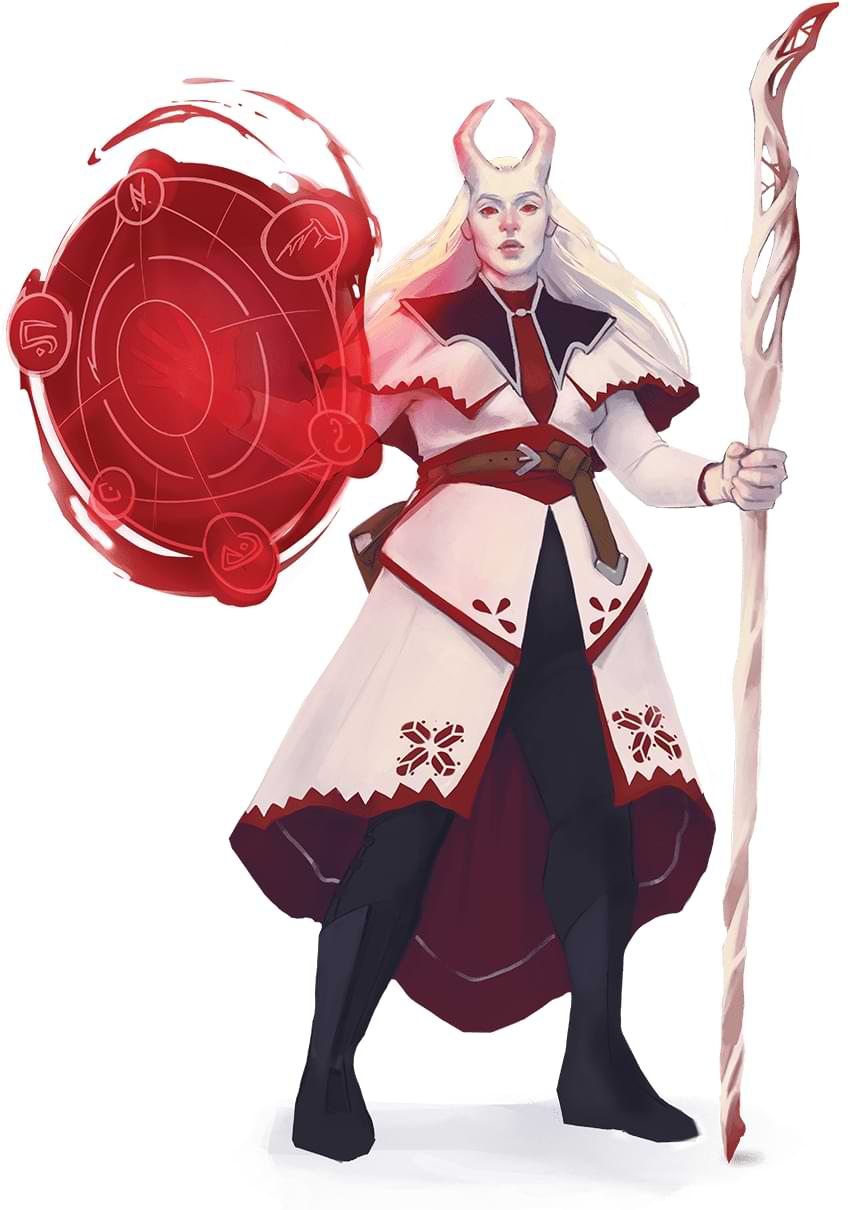
Critical Roles
With a whopping nine (“Nein!”) subclasses in Tal’Dorei Campaign Setting Reborn, there is a little something to be found for any desired party role.
Looking for a tank (or frontline defender)? No surprise, the Path of the Juggernaut barbarian is your bet. Craving control over the battlefield? Try the College of Tragedy bard, Blood Domain cleric, Circle of the Blighted druid, or even the Runechild sorcerer (at later levels)—even the Path of the Juggernaut barbarian can reposition foes!
Fans of exploration and survival will love the Circle of the Blighted druid, Way of the Cobalt Soul monk, and Runechild sorcerer, and support-oriented players should look forward to the College of Tragedy bard, Moon Domain cleric, and Runechild. The Way of the Cobalt Soul pairs well with those chasing social interaction (ah, the famously charismatic monk!), and the Oath of the Open Sea paladin dips their toe into a bit of everything: exploration and survival, control, support, and damage-dealing are all in their wheelhouse!
If you’re excited to make like an Open Sea paladin and dive into the depths of these subclasses, you can find them in Tal’Dorei Campaign Setting Reborn.
Cameron Powell is a real-life bard who accidentally dumped Charisma, and has played Purloque the loxodon cleric on Dice, Camera, Action!. When he’s not causing mayhem as a Nyxborn satyr in Theros, he enjoys practicing yoga, listening to vinyl records, and writing ‘80s synth–inspired pop music.








-
View User Profile
-
Send Message
Posted Aug 18, 2023yay
-
View User Profile
-
Send Message
Posted Aug 18, 2023yay
-
View User Profile
-
Send Message
Posted Aug 18, 2023yay
-
View User Profile
-
Send Message
Posted Aug 18, 2023I play a Runechild sorcerer in a living westmarch campaign. So glad to see that my Zaxarn is a real boy now :D
-
View User Profile
-
Send Message
Posted Aug 18, 2023yay
-
View User Profile
-
Send Message
Posted Aug 18, 2023Yay
-
View User Profile
-
Send Message
Posted Aug 18, 2023Love this
-
View User Profile
-
Send Message
Posted Aug 18, 2023Preview "9 Mighty" New Subclasses? Nice touch by the author! ;)
-
View User Profile
-
Send Message
Posted Aug 18, 2023In love with the College of Tragedy. I have already made a character in advance for it
-
View User Profile
-
Send Message
Posted Aug 18, 2023I have the physical book. My wife played the blood wizard for a while and loved it. Highly recommend that subclass.
-
View User Profile
-
Send Message
Posted Aug 18, 2023This is epic
-
View User Profile
-
Send Message
Posted Aug 18, 2023yay
-
View User Profile
-
Send Message
Posted Aug 18, 2023I've been noticing an increasing influx of third-party content like the Explorer’s Guide to Wildemount and Critical Role: Call of the Netherdeep, that I feel compelled to exclude from games I'm running as a Dungeon Master. It's getting to the point where the options for official content are becoming rather limited. I'm genuinely hoping to see some fresh material straight from Wizards of the Coast that breaks away from the trend of rehashes and reprints of older concepts.
It'd be great to witness some true innovation.
While I can appreciate the quality of third-party content such as that mentioned in this article, it just doesn't feel right for it to be taking the place of official releases. Especially when it's being sold on a platform that positions itself as the go-to 5e toolkit.
Platforms like DriveThruRPG seem like a more fitting home for such content.
Just to be clear, I'm not trying to undermine the value that people find in using this kind of content, nor do I think it should disappear altogether. My concern lies in the fact that third-party content seems to be taking over from the official releases. It feels like Wizards might be leaning a bit too much into nostalgia, opting for rehashed or republished materials instead of creating something fresh.
While nostalgia has its place, it can't sustain everything. Relying heavily on nostalgia seems to be inadvertently making third-party content almost essential for players and DMs alike.
It's a rather disheartening situation.
-
View User Profile
-
Send Message
Posted Aug 18, 2023yay
-
View User Profile
-
Send Message
Posted Aug 18, 2023If you're that set against it then just don't let your players tick the "Critical Role Content" box on the settings and this won't appear.
However my counter point to your complaint is that stuff like this is *exactly* what D&D Beyond need to be doing more of. We've had years of complaints that the Forgotten Realms has become the default setting and WotC publishing stuff like this and the other Critical Role books is a perfect way to give DMs and players more options for settings and stories to play, especially since CR is so popular and has introduced so many new people to the hobby. I'm also not sure what you mean by "...My concern lies in the fact that third-party content seems to be taking over from the official releases..." considering even if you include the two previous Critical Role books (which were official releases but whatever) that's still only three third party books in a decade of 5e among dozens of other releases made by WotC
-
View User Profile
-
Send Message
Posted Aug 18, 2023It's worth highlighting that the Forgotten Realms is the bedrock of 5e. When players express a yearning for more storytelling possibilities within the Forgotten Realms, it's a call that Wizards should heed. A vibrant array of first-party adventure modules, source books, and one-shot scenarios, crafted with the 5e ruleset in mind and thoughtfully balanced to ensure a smooth progression from levels 1 to 20, regardless of a player's familiarity with the game, could certainly ease our reliance on third-party publishers.
This really gets to the heart of the matter.
Instead of crafting entirely new first-party content that seamlessly meshes with the 5e system and the world of the Forgotten Realms, Wizards appears to be dipping into the well of reprints and recycled material from earlier editions. These materials sometimes get a 'modern makeover,' but they can feel like a square peg forced into a round hole. Interestingly, also, through their insistance upon nostalgia reimagined, Wizards keeps the spotlight on third-party content such as Critical Role and Acquisitions Inc. They also indulge in whimsical joke offerings like Rick and Morty and Minecraft collaborations. This approach raises eyebrows, especially considering Wizards has another intellectual property, M:tG, that brims with potential and depth, that could effortlessly enrich the world of D&D 5e, filling edgecase gaps that official content might leave.
Additionally, I'm uncertain about the extent to which CR content has truly expanded the D&D player community. While it's undeniable that it's drawn countless fans of Critical Role to dive into the Exandria content, connecting that enthusiasm to the broader D&D universe remains a bit of a strech (at least for me). I would actually argue that Stranger Things has left a more tangible mark in the number of new players than CR.
The point is though that this reliance upon third-party content makes me sad.
Wizards are more than capable of creating incredible content, but they have lost their way and allowed the third-party creators to pickup the slack, and I really, really wish they'd get back to doing what they do best - the crafting and facilitating of unforgettable adventures; not acting as a byline for whatever third party creator is flavour of the month.
-
View User Profile
-
Send Message
Posted Aug 18, 2023I’m struggling to understand your point. Are you implying third party content is somehow taking resources from WOTC?
-
View User Profile
-
Send Message
Posted Aug 18, 2023Uhm, Nah.
Lots of folks like using DnDBeyonds interface AND want to use third party content.
Don't like it, don't buy it.
Don't want your players using it, let them know they can't in their games.
There is no reason to interfere with MY ability to use things on my preferred platform because YOU don't want to use it.
-
View User Profile
-
Send Message
Posted Aug 18, 2023It'd be nice to be able to purchase these subclasses individually.
-
View User Profile
-
Send Message
Posted Aug 18, 2023Love this. Bought it almost immediately and I already owned the book. Some of my favorite spells, backgrounds, subclasses, species and magic items to play with are from third party content. Including more in dndbeyond is a great way to help support all of the hard working and creative people who love this game and don't work for WoTC. I sincerely hope this is just the beginning.